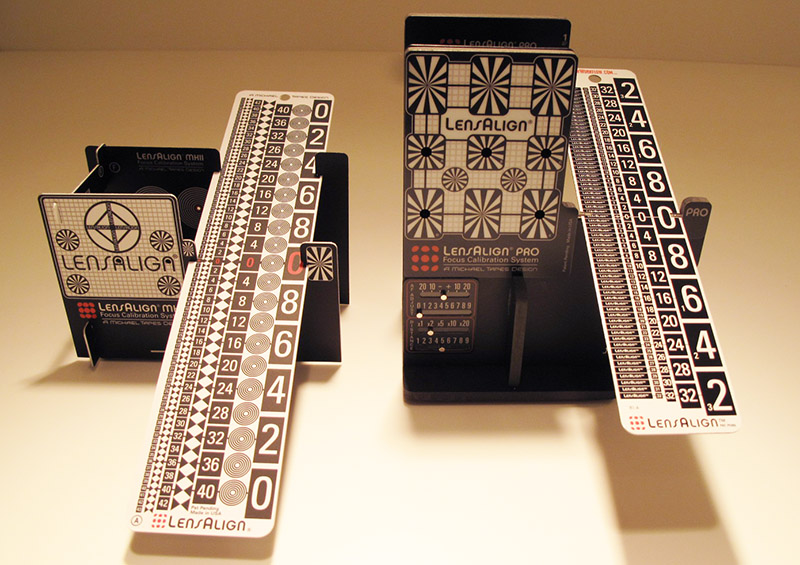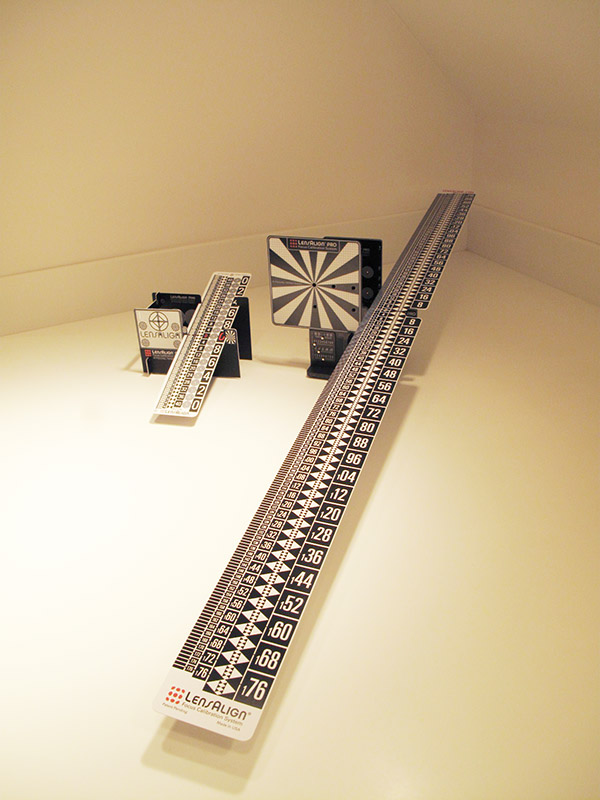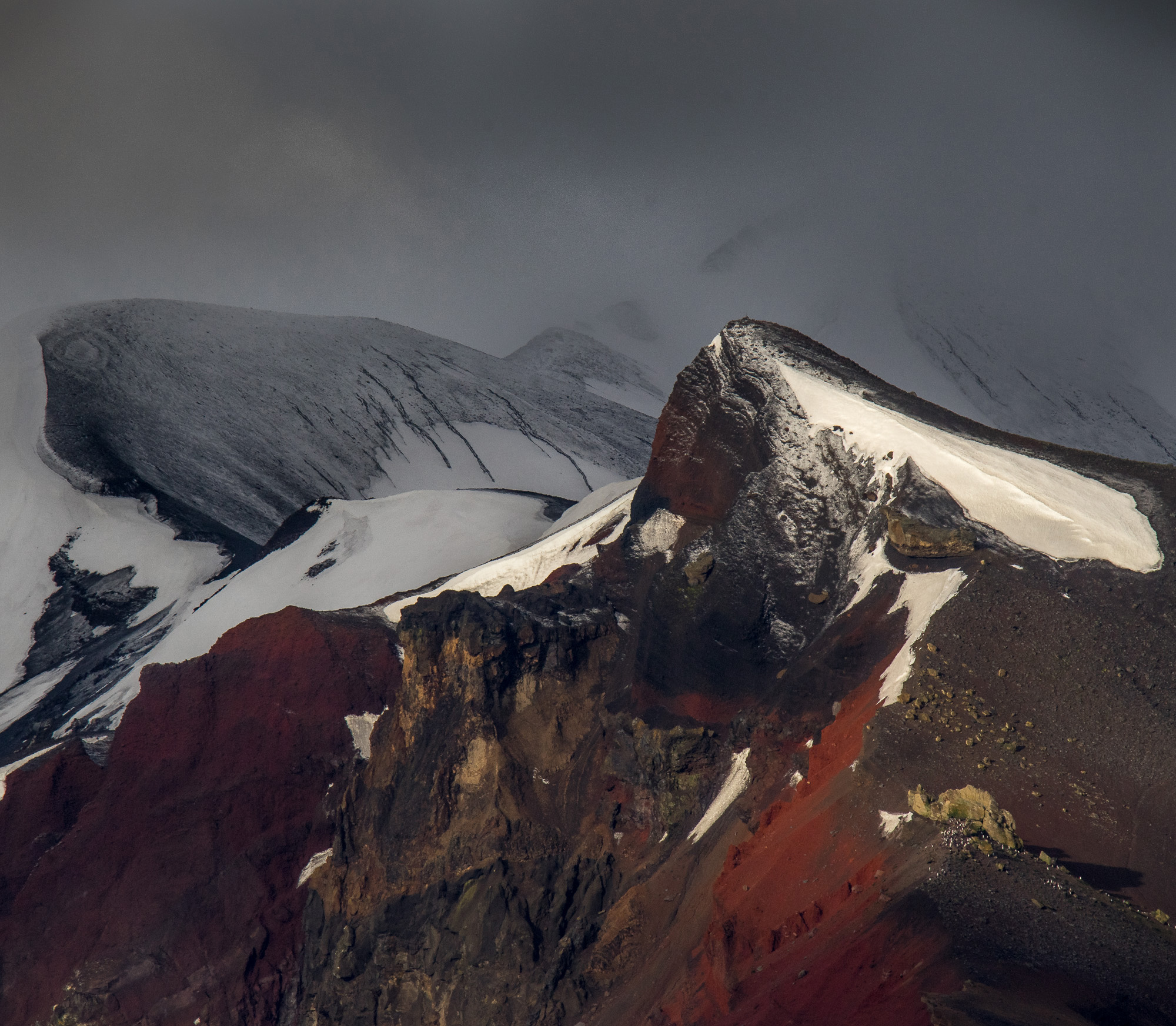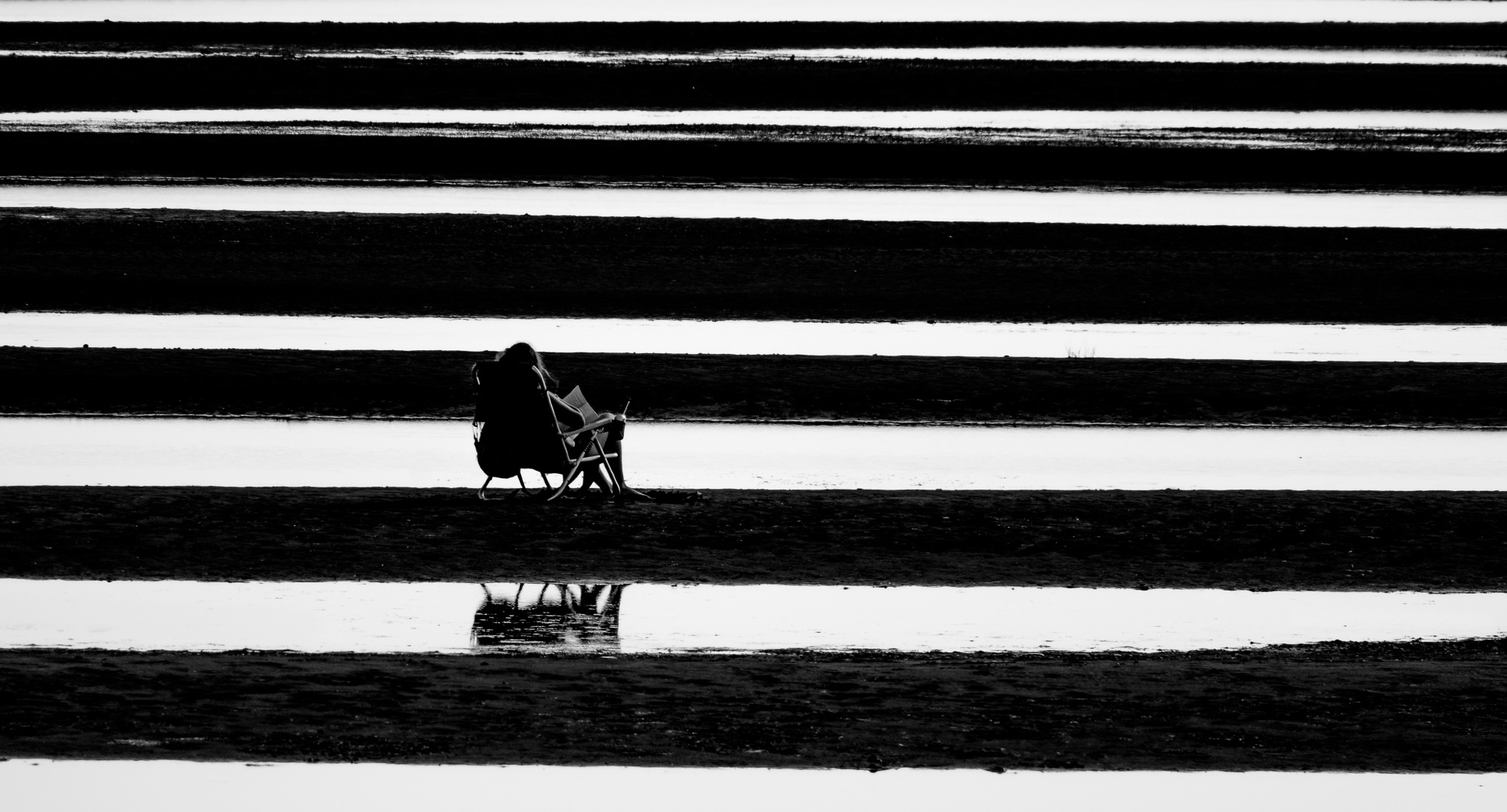
“Lilac Breasted Roller”
Canon 1Ds MKIII with 400mm DO lens wide open
Introduction
One of the questions I get asked the most is : Why are my pictures not sharp?
Sometimes, the question is asked by budding photographers that have bad habits, like using flimsy tripods and no mirror up mode in their SLR’s. Other times, however, the question comes from experienced photographers that have excellent technique and very good equipment.
Most photographers assume that the manual focus and the autofocus systems in their cameras, as well as the lenses, work to perfection, so the problem should lie somewhere else.
Unfortunately, this is not the case. It turns out that many camera systems can be out of focus at the sensor with the concurrent deterioration in image sharpness.
I was recently contacted by Michael Tapes of Michael Tapes Design. He kindly invited me to test and do a review of his latest design, the LensAlign Mk II. This new device sells for $79.95, and unlike the LensAlign Pro ($179.00), which Michael Reichmann previously reviewed, it is smaller and can be folded flat for travel. In spite of the smaller size and foldability, the company claims it is just as accurate as the original. The standard ruler is 10.5 inches, with an optional 24 inch long ruler.
Rather than just review the new device, which would be largely repetitive given Michael’s prior review, I thought I would address the focus problem issues in more detail.
The Problem
Discovery
The fact that some lenses were front focusing, while others were back focusing seems to have been “discovered” by a number of professional photographers that were shooting with 35 mm size DSLR’s and complaining about it to manufacturers as well as in the forums.
The problem actually goes back much farther than that.
I was first made aware of the problem while participating in a workshop lead by John Sexton in the 1980’s. John mentioned that most view cameras he had tested failed to have the groundglass in exactly the same position as the film in a holder, and he also mentioned that he tested all his film holders, because some were noticeably out of spec. He suggested a simple test: Take a point source, such as a very small light bulb, make sure it is perfectly focused on the groundglass and then take a picture with the lens wide open (minimal depth of field). Then, process the film and check and see if the point source is in focus on the negative.
I performed the test with a number of cameras and holders, and what I found out paralleled John’s experience: Most cameras were out of focus, and a number of holders were off spec. Interestingly, of all the cameras I tested, only those camera brands that shimmed the groundglass for each camera individually were in focus: Linhof, Sinar and Ebony were the salient “good” brands in my tests back then.
How history repeats itself!
In today’s world of digital backs, the only technical camera that can guarantee being in focus at the sensor plane is the ALPA, because it is the only camera that allows you to shim the back adapter. Shimming did the job back in the 80’s, and it still does the job today. For an explanation of shimming on the ALPA, as well as real world images showing the difference, click here to read my recent article on Medium Format Digital cameras.
My current understanding is that view camera photographers knew almost from the beginning that only certain cameras and certain film holders produced sharp images.
The problem of images out of focus at the film or the sensor plane is as old as photography itself.
Against Intuition
It is important to understand that the focus problem as it relates to the focal length of lenses is against the intuition of most photographers.
Most photographers believe that the problem is more acute with long focal length lenses, because these lenses have shallower depth of field.
It turns out that exactly the opposite is true: The problem is much more acute with short focal length lenses.
You can prove this to yourself with a simple test:
1. Take a long lens, say something around 200 mm or longer for a small SLR. Focus the lens from infinity to its nearest focusing distance and observe how much the optical elements move. You will see a lot of movement (easier to see with non-internal focusing lenses).
2. Now take a wide lens, such as a 24 mm or shorter. Do the same test, and you will notice that the total movement of the lens elements is extremely small.
Therefore, extremely small variations from perfection in the lens to sensor distance can cause large problems for short lenses. Longer lenses are less sensitive. If you see a problem with a long lens, you are likely dealing with a large focus plane error.
Causes of the problem
The main causes of the problem are camera and lens design, combined with manufacturing tolerances of mass produced devices.
Let’s face it, the vast majority of cameras and lenses are mass produced. If the manufacturing tolerances were incredibly tight, and each piece was tweaked and adjusted to perfection, prices would have to rise and quantities would shrink. Many people could not afford these very expensive cameras, and even those who could might have to wait for a long time to get their hands on one because of the limited supply. This would not be a particularly appealing situation.
Instead, things are massed produced to be “within tolerances”, but being within tolerances means that each piece is within a certain range of error that is considered to be “acceptable” by the manufacturer. Also, as most of us have experienced, periodically a piece that is out of spec seems to slip through all quality control and is sold to a customer.
The point I am trying to make is that the sensor will not be exactly where it is supposed to be, the mirror in an SLR will not come to rest in the perfect position, the autofocus system may be mounted just a wee bit off from the perfect position, it may be slightly out of perfect calibration, the focusing screen may be a little thinner or thicker than the spec, it may be placed slightly off in the camera, the lens mount may be slightly deeper or shallower than the spec, etc.
So, the consequence of mass production in large quantities at reasonable prices is that all these small deviations will pile up on top of each other and can cause the AF system in your camera to be out of focus. There is also a statistically significant probability that even if the autofocus system is working superbly, manual focus on the screen does not match the autofocus system on the camera.
LensAlign Products
Enter LensAlign. I would like to start with a couple of quotes from Michael Tapes, the founder, owner and designer of Lens Align:
“While most people think that LensAlign was designed to provide a precision reference when adjusting the AF-Tune (Nikon) or AF Micro-Adjustment (Canon) of the newer DSLR, in fact, LensAlign was conceived prior to Canon’s first introduction of the user adjustable Micro-Adjustment. My concern was simply that more and more people knew (and posted) that their lens/body combinations were subject to front/back focus errors. But it was hard to prove, and many fellow photographers and some manufacturers wrote it off as user error. Having been victim of a miss-matched camera/telephoto combination myself (my wide open bird photographs were never sharp), I set out to design a reference standard that could be used to test and document, in a repeatable fashion, the Auto and Manual performance of camera focus systems. Specifically, if I set the camera to focus on plane A, will the captured photograph have plane A as the sharpest point of focus?”
“Most people think that if it is sharp on the “ground glass” in the viewfinder, it has to be sharp in the captured image. This is very far from the truth. The light path that the view finder and image sensor use have only 1 thing in common and that is the lens. The image on the viewfinder “ground glass” is a proxy or substitute for the image that will eventually be captured. There are several points in the manual focus system where errors can be generated. The main ones are the mirror, the alignment of the “ground glass”, the alignment of the pentaprism assembly, the diopter lens, the photographers eye, the photographers eye-hand movement coordination, and the stepped function of the manual focus electro-mechanical focus mechanism (fly-by-wire) of most of today’s lenses (to name a few). And to get to that pesky “ground glass” I keep referring to, this is now almost always plastic and is NOT designed to show a good focus or actual depth of field. It is simply designed to be as bright as possible. Yup…the viewfinder in today’s DSLRs is a poor representation of focus and DOF, and may or may not be accurate. LensAlign was designed to test the accuracy of the manual focus chain in addition to the AF chain that people are aware of.”
Figure 1 shows the LensAlign Pro system (on the right), next to the new LensAlign Mk II.

Figure 1
As you can see, the new Lens Align MK II is smaller. It is also much lighter, and as you can see from the protruding tabs in the picture, it can be disassembled and packed flat for transport. The ruler is made of a very light plastic instead of metal. In general, think of it as an ultralight version that can be packed very compactly.
The two important things are:
1. The new product preserves the ability to make sure that the focus target on the Lens Align unit and the sensor are parallel to each other. This is critical for reliable focusing tests, and as far as I know, LensAlign makes the only products that assure this parallelism. Parallelism is achieved with a clever system (patent pending) where you either take a shot or use live view to make sure that a red dot in the back is precisely in the middle of a hole in the front. If you go to the company’s website, you can see how this is done in a short instructional video clip.
2. According to the manufacturer, the accuracy of the new system is identical to the Pro model.
Figure 2 shows the Pro model with the 4-foot long ruler option, and the big focusing target option, next to the Mk II model,. The Pro model looks gigantic by comparison. Some people do require the long ruler, however, and a 2 foot long ruler option will be available for the MK II.

Figure 2
Does It Work?
The short answer is yes, it works very well. If you have a camera that allows you to perform small focus adjustments and index them to specific lenses, you will in most cases get sharper images using LensAlign and making these adjustments, versus doing nothing.
If your camera does not allow you to make these adjustments, the product allows you to test your camera and your lenses. You might be surprised, I have seen many cameras that are out of focus, and I have also seen a fair amount of variability with different samples of the same lens. This kind of an exercise will at least give you an objective set of data so you know what you are dealing with.
Conclusion
Something still does not feel right in my gut when photographers have to perform focus adjustments on their equipment. It sort of feels like a “band-aid” approach without getting to the real core of the problem.
In my mind, the ultimate solution has to be to extract the image directly from the sensor to see if it is sharp. This eliminates all other elements in the chain. Obviously, Live View as it exists today is one way to accomplish this, but I can think of better solutions with new camera designs. For example, we now have some cameras with high resolution electronic displays like the Panasonic GH2 and the Sony A55. I wonder if we will see the day when the SLR becomes ancient history and we have digital displays that are as good or better than an SLR groundglass in terms of image quality, plus the benefit of avoiding the mirror with all its moving parts, vibration and the restrictions it imposes on lens design.
I also hope that in the not too distant future we will have better ways to focus view cameras and technical cameras directly off the sensor by using newer digital back displays instead of a groundglass.
My expectation is that eventually camera and lens designs will advance to the point that focus plane problems will be a thing of the past. In the meantime, LensAlign is the best option for DSLR users, particularly those with models that allow for lens indexed focus correction.
January, 2011
Read this story and all the best stories on The Luminous Landscape
The author has made this story available to Luminous Landscape members only. Upgrade to get instant access to this story and other benefits available only to members.
Why choose us?
Luminous-Landscape is a membership site. Our website contains over 5300 articles on almost every topic, camera, lens and printer you can imagine. Our membership model is simple, just $2 a month ($24.00 USD a year). This $24 gains you access to a wealth of information including all our past and future video tutorials on such topics as Lightroom, Capture One, Printing, file management and dozens of interviews and travel videos.
- New Articles every few days
- All original content found nowhere else on the web
- No Pop Up Google Sense ads – Our advertisers are photo related
- Download/stream video to any device
- NEW videos monthly
- Top well-known photographer contributors
- Posts from industry leaders
- Speciality Photography Workshops
- Mobile device scalable
- Exclusive video interviews
- Special vendor offers for members
- Hands On Product reviews
- FREE – User Forum. One of the most read user forums on the internet
- Access to our community Buy and Sell pages; for members only.













